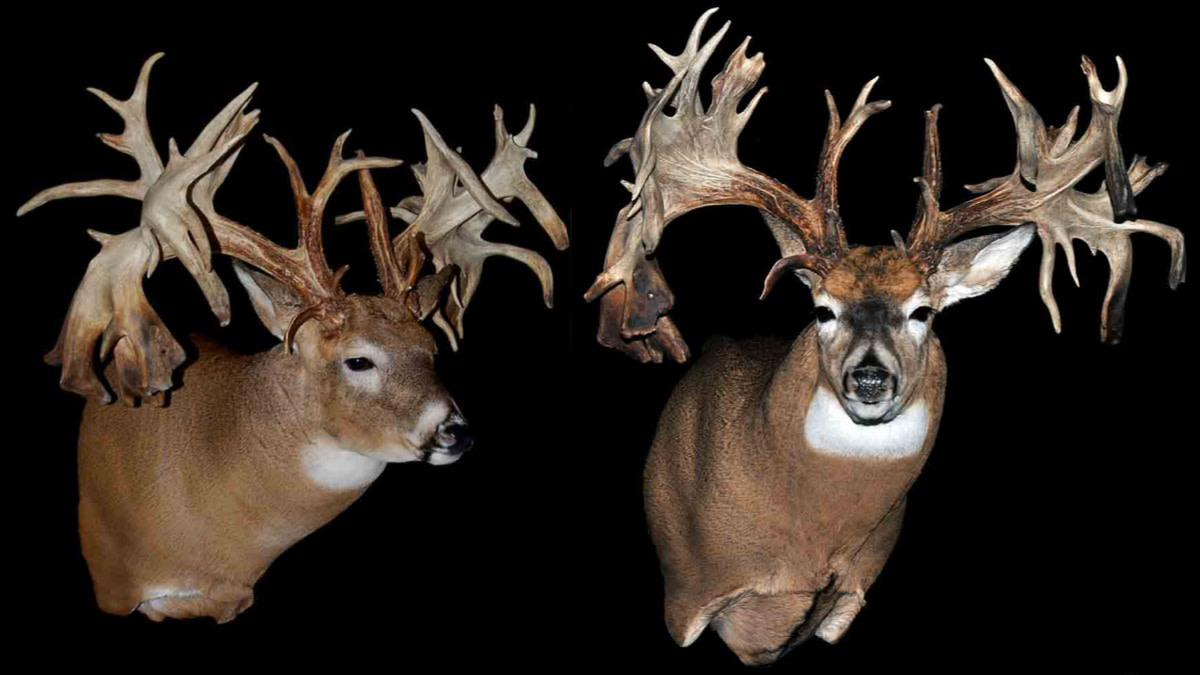
There’s a difference between book smart and bar smart. You may not be book smart, but this series can make you seem educated and interesting from a barstool. So, belly up, pour yourself a glass of something good and take mental notes as we look at what caused the mysterious hole in the antlers of this famous whitetail.
While the vast majority of critters slain by trains go unreported, there’s one kill that did not fly under the radar. The Hole-in-the-Horn Buck is Boone & Crockett’s runner up in the non-typical category, but it’s second to none as North America’s most famous whitetail. The deer was discovered in 1940 by a group of railroad workers in Ohio, and the 328 inches of antler caused some confusion as to what it was.
“One of the men said, ‘It’s an elk!’ Then, another one said, ‘No, it’s a moose!’ I’d seen deer before, but really wasn’t sure if this was one or not,” said George Winters, one of the first men on the scene. “The animal had been dead for a week or so and he was huge. He looked like he weighed 300 or 400 pounds. He’d obviously been hit by a train.”
The buck was mounted and sold to a local bar for $25. For decades, it lorded over the smoke-filled lounge that kept residents of the small town hydrated. As patrons marveled at the oversized antlers, conversations would always turn to what caused the hole in its drop tine.
Some speculated it was formed by the errant shot of an unlucky hunter’s bullet. Others said it happened when the buck was launched by the train into a chain link fence. It wasn’t until 2015 that a bartender from the Kent Canadian Club finally set the record straight—he was there when the hole was formed.
“Whit Nighman was the manager of our club and I bartended for him,” Stub Bower told North American Whitetail. “There wasn’t a solid wall to hook the mount on, just some lattice up there. The head had always hung crooked or something. And he says, ‘Let’s fix that deer head so it stays right.’ He got out a quarter-inch drill and we drilled a hole through there and took a wire and put a loop on the end of it and put a cotter key on the back and pulled it tight to the lattice and wired it.”
Eventually, word spread outside of Ohio that the next potential world record was collecting dust at a dimly-lit watering hole, and the mount was bought by an antler collector in 1982.
The Hole-in-the-Horn Buck now sits at the Wonders of Wildlife Museum in Springfield, Missouri, but I imagine it longs for the days of overhearing fisherman’s tales, hunting stories, and bar room banter.
Feature image via Antlers by Klaus.




